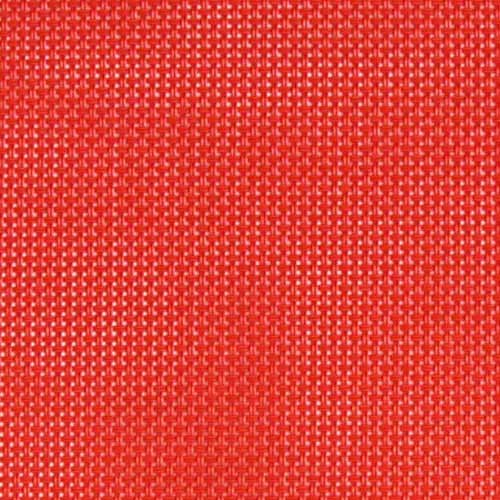History
The importance of hair and fiber analysis and its significance in crime investigation was realized in the early stages of forensic science. One of the first scientific report involving hair and fiber analysis (trichology) was published in 1857 in France, introducing the world to the idea that analyzing hair and fibers could be useful in identifying criminals. In the early twentieth century this field expanded considerably once the examination of hair microscopically was discovered. A renowned resource for hair and fiber analysis was Professor John Glaister’s “Hairs of Mammalia from the Medico-legal Aspect” which was published in 1977. Also, John Hick’s “Microscopy of Hairs: A Practical Guide and Manual” became an important tool for forensic experts because it laid out the groundwork for using hair as evidence in criminal cases. Hair and fiber analysis is still widely used in forensics today and has helped solve numerous criminal cases since its discovery.

Hair Components
Major Types of Fibers
Cashmere: made from the undercoat of the Kashmir goat. China, Mongolia, and Tibet produce sixty percent of the world’s cashmere. Cashmere is very soft, lightweight, and warm, but because it is produced in small amounts it is very expensive. It drapes well and is very luxurious.

Wool: made from the fleece of sheep. There are many different sheep living in different climates, meaning there are many different types of wool. Coarser wools are used for carpets, soft wools are used for clothing, and highly crimped wools and wools with long fibers are used for yarn. Wool is warm, resists wrinkle, inflammable and very durable, making it a very popular fiber for clothing.

Silk: made of the unwound filament of a silkworm cocoon. Silk retains shape, has a natural luster, drapes well, and has a reputation of being luxurious and sensuous fabric. Known as the strongest fiber, its weaknesses are perspiration and sunlight. Silk is absorbent and dyes easily, but colors run easily when in contact with water.

Cotton: grows around the seeds of cotton plants. It is the world’s most used fiber due to its coolness, softness, and comfortableness. Cotton is used to make clothing, furniture, medical supplies, automobile cloths, and many other things. High temperatures are tolerable for cotton, and its absorbency allows it to be dyed easily.

Linen: made from the stalk of flax plants. It is the strongest of vegetable fibers and is known as one of the earliest fibers used to make string. Linen dyes easily and is undamaged by boiled water. Comfortable, highly absorbent and containing a natural luster, linen is commonly used in clothing, bedding, and many other useful cloth objects.

Hair/Fiber Collection Techniques
When collecting hairs and fibers from a crime scene, detectives are not to touch any of the evidence. They must wear sterile gloves when handling evidence or use equipment such as tweezers, vacuum sweepers, and lifting tape to pick up any hairs or fibers. Samples should be placed in paper bindles or coin envelopes which should be sealed in larger envelopes and labeled accordingly. Collection of all hairs and fibers present is essential. If hairs or fibers are attached to objects/substances (dried blood, caught on metal/cracked glass) removal is unacceptable; the object/substance must also be removed to keep the hair or fiber intact. Hairs and fibers are important in identifying suspects, criminals, and victims and must be handled with care to ensure accuracy in identification tests.

http://www.crime-scene-investigator.net/collect.html http://www.centralreg.k12.nj.us/webpages/SHopson/files/hair.pdf http://www.sciencephoto.com/media/221978/enlarge
Hair/Fiber Analysis
When analyzing hairs and fibers from crime scenes, scientists use microscopes and fibers from related locations to identify criminals, suspects, and victims. Microscopes are used to identify difference between animal hairs and human hairs and differences between various fibers. Race can be determined through the use of a microscope, but age and sex are still undeterminable at this point. Comparing fibers found at the crime scene to those of people’s carpets, clothes, and car cloths is another way that scientists analyze the origin of the fibers. Through both of these methods, scientists are typically successful in determining criminals, suspects, and victims.

In class students were instructed to complete a lab in which they were to identify the differences of various types of hairs and fibers. Our groups were given hairs from different races and various animals, and fibers such as cotton, nylon, silk, and many others. By using the microscopes were able to observe the differences and distinct characteristics of each of the hairs and fibers which proved to be helpful in another lab we were instructed to complete on profiling a “criminal”. We were given hair and fiber samples along with ransom notes, fingerprints, and smeared substances to try to identify a “victim” and “murderer”. Based on what we learned in the hair/fiber analysis lab we were able to identify that the “victim” was most likely an African American. If given the chance, study your own hair under a microscope. What does your hair tell about you?
http://www.centralreg.k12.nj.us/webpages/SHopson/files/hair.pdf
Microscope picture taken by Marissa Morrison.
Microscope picture taken by Marissa Morrison.
Reliability of Hair/Fiber Crime Scene Data
Hair:
· Human head hair has odds of 4500 to 12 of originating from the same person (0.0022%)
· Pubic hair has even better odds of 800 to 1.3 (0.00012%)
· Negroid and Mongoloid hairs tend to exhibit less variation and therefore usually lower odds.
Based on these studies performed from the Canadian Mounted Police, hair can be highly distinctive evidence when solving crimes and is very reliable for identifying criminals, suspects, and victims involved in the case.

Fiber:
· Fiber is often the most common type of evidence found at a crime scene
· Importance is usually magnified in cases of homicide, assault, or sexual offences
· Fibers may be found caught in screens, or on jagged surfaces
· Around broken glass
· On cars involved in pedestrian hit and runs
· Transferred during a struggle
Because fibers are so common in crime scenes and can be found in various places they are not as distinctive for identification as hairs but are reliable in informing detectives of what clothing the criminals, suspects, and victims may have been wearing as well as locations they may have been in (cars, houses, etc.).

Famous Hair/Fiber Analysis Cases
One famous case where fiber analysis was used to identify a criminal was the Atlanta Child Murders in which Robert Anthony Buell was convicted for murder. Buell raped and murdered two young girls in Ohio and left behind distinct orange fibers on each of the bodies. After further analysis it was determined that these fibers came from the same carpet that could be found in a particular van. An unannounced amount of time later a woman was kidnapped and kept prisoner in a man’s house, but one day when the man left she was able to escape and contact the authorities. After further investigation they found that this man’s van contained the same fibers found on the girls’ bodies and identified Robert Anthony Buell as the abductor and murderer. Thanks to forensics, Buell was found guilty and incarcerated for the horrific crimes he committed.



Amanda, this part is very informational but you should add some more pictures!!!
ReplyDeleteYour info is great, your pictures are great, your blog is great. The post is infomative and goes very in depth on hair/fiber analysis. MAYBE ,if you feel like it, you could add one or two more pictures to your post. Overall its a really great post.
ReplyDeleteGreat post! Very thorough details, and the pictures really enhance the text! Awesome!
ReplyDelete